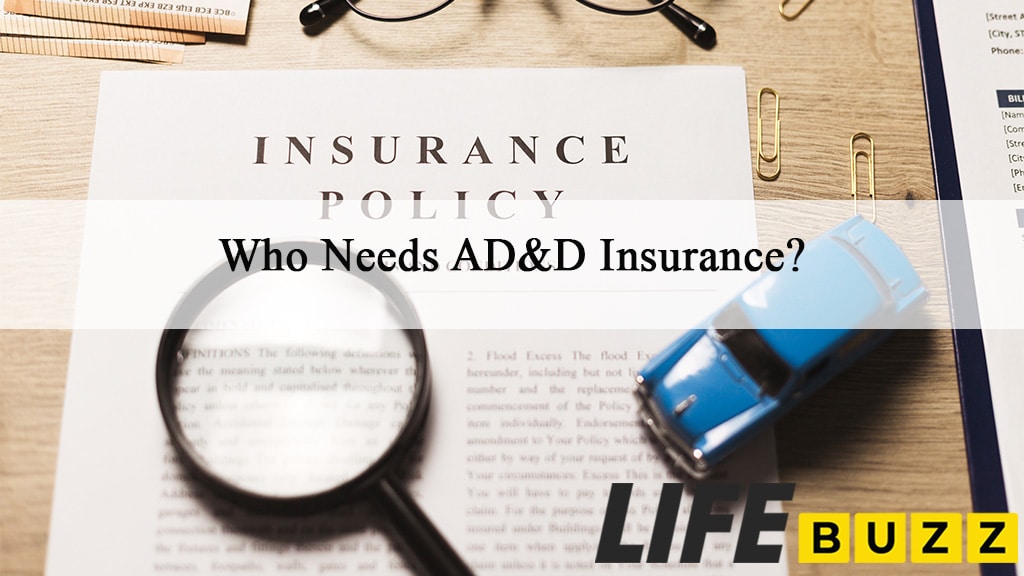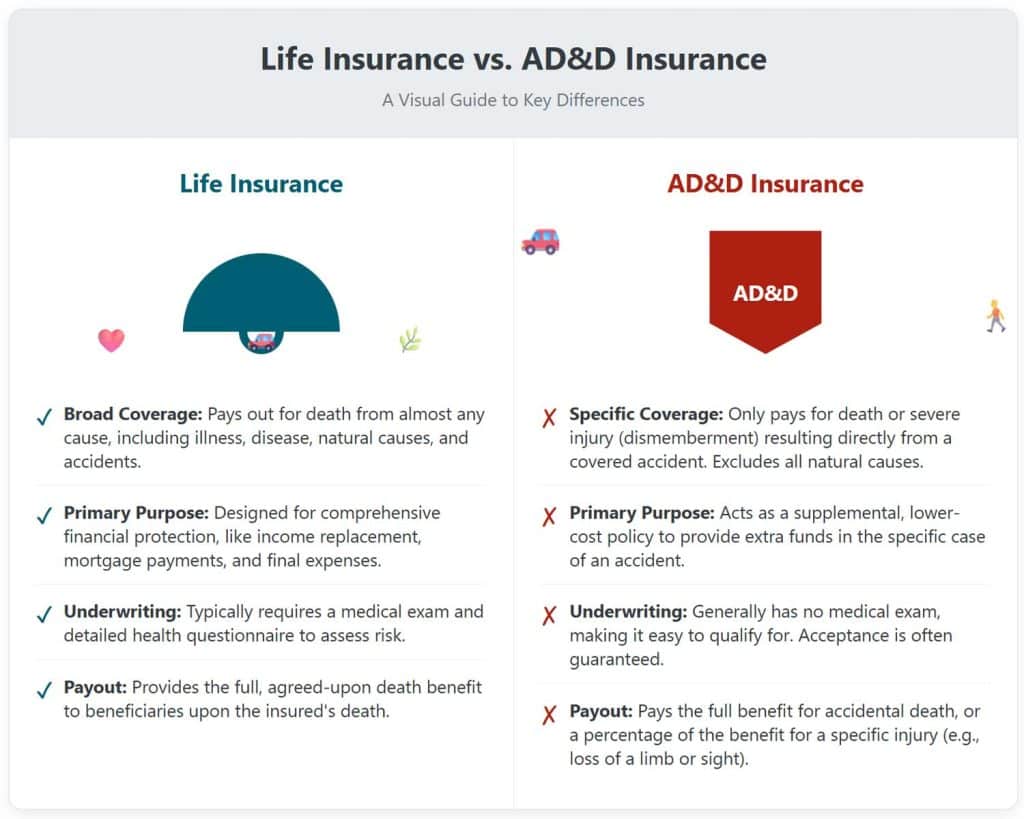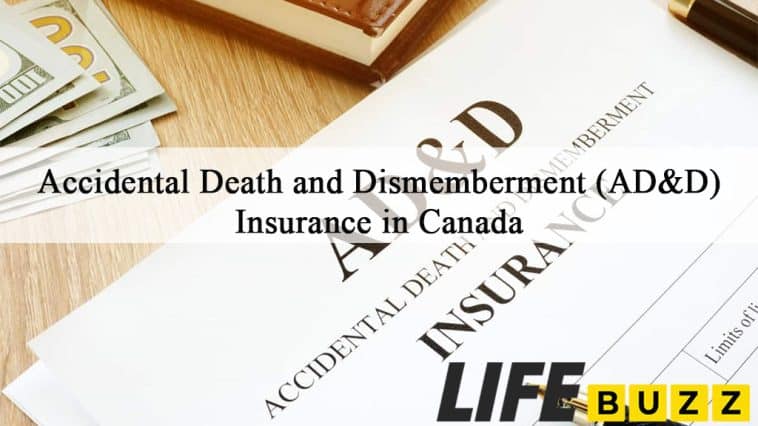Accidental death and dismemberment insurance offers financial protection in the event of death or loss of limb or function due to an accident.
This guide will explore what exactly AD&D insurance covers, who needs it, where to buy it, and the pros and cons of this supplemental insurance product.
What is Accidental Death and Dismemberment Insurance?
Unlike regular life insurance in Canada, which covers any cause of death, Accidental death and dismemberment (AD&D) insurance covers deaths that occur due to accidents. This includes fatal accidents and dismemberment, which refers to the loss of limbs, appendages, sight, speech, hearing, and other functions due to an accident.
In essence, AD&D insurance provides financial protection to your family if you unexpectedly pass away or suffer permanent disability due to an accident. It is usually offered as a supplement or rider to add to existing life insurance coverage.
This insurance can be purchased in various coverage amounts, typically ranging from $25,000 to $500,000, based on your specific needs and budget. Policies are available as individual plans directly from insurance companies or group plans through an employer. Premium costs vary but are generally more affordable than regular life insurance since they only cover accidents.
What Does AD&D Insurance Cover?
AD&D insurance covers both accidental death and dismemberment/loss of critical functions in the event of an accident.
Fatal Accidents Covered
For a death benefit to be paid, the death must be a direct result of an accident and occur within a specific timeframe, often 90 days, as stipulated in the policy. Covered accidents generally include:
- Motor vehicle collisions, including car, motorcycle, bus, or pedestrian accidents. Latest data from Transport Canada (May 2025) shows that there were 1,964 motor vehicle fatalities in Canada in 2023, highlighting the risk of such incidents.
- Workplace accidents like falls, equipment malfunctions, electrocutions, and injuries involving machinery
- Drowning, fires, and exposure to the elements
- Falls from heights
- Natural disasters such as tornadoes, floods, or earthquakes
- Airplane, helicopter, or hot air balloon crashes
- Recreational accidents like boating, biking, horseback riding, or skiing
- Accidents involving firearms, explosives, or electrocution
Essentially, AD&D insurance covers deaths that occur due to violent external causes and not due to medical issues or natural causes. Death must occur within a specified timeframe of the accident for the benefit to be payable, usually within 90 days, depending on the policy.
Dismemberment and Loss of Function Covered
If an accident results in a specified injury but not death, the policy pays a portion of the benefit amount, known as a “living benefit”. This includes the loss of:
- Limbs such as arms, legs, hands, feet, fingers, or toes
- Sight in one or both eyes
- Speech
- Hearing in one or both ears
The policy contains a “schedule of losses” that outlines the percentage of the total benefit paid for each specific injury. For example, a typical schedule might look like this:
- Losing both arms may pay 100% of the death benefit
- Losing one arm may pay 50% of the death benefit
- Losing a finger may pay 5-10% of the death benefit
- Loss of sight in both eyes may pay 100% of the death benefit
- Loss of sight in one eye may pay 50% of the death benefit
- Complete loss of hearing may pay 50-100% of the death benefit
- Loss of speech may pay 50% of the death benefit
Read more: Laser Eye Surgery Cost in Canada
Note: These percentages are illustrative and vary by insurer and policy.
What is Not Covered by AD&D Insurance?
While AD&D insurance covers a wide range of accidental injuries and deaths, most policies have exclusions for certain circumstances, including the death or injury due to:
- Natural causes: Illness, disease, heart attacks, strokes, or infections.
- Suicide or intentionally self-inflicted injuries.
- War or acts of terrorism.
- Use of illegal drugs or impairment by alcohol (often including prescription drug misuse).
- Committing a criminal act.
- High-risk hobbies: Many policies exclude activities like scuba diving, auto racing, or hang gliding unless an additional premium is paid.
- Aviation: Accidents in private planes are often excluded, though travel as a fare-paying passenger on a commercial flight is typically covered.
It’s important to review the exclusions section of this type of insurance, as benefits will not be paid if death or dismemberment occurs due to excluded causes.
Who Needs AD&D Insurance?

AD&D insurance is designed to provide supplemental coverage and is especially beneficial for:
Individuals in High-Risk Occupations
According to the Association of Workers’ Compensation Boards of Canada (AWCBC), there were 993 workplace fatalities recorded in Canada in 2022. Industries like construction, transportation, manufacturing, and mining carry a higher risk of serious accidents, making AD&D a valuable layer of protection.
Younger Individuals
For people under 45, accidents are a leading cause of death in Canada. An AD&D policy can provide affordable financial protection for a young family that might not yet be able to afford a large traditional life insurance policy.
Premiums are lowest when purchasing at younger ages under 40. Those with young families can benefit from AD&D policies to protect loved ones.
Those Seeking to Supplement Existing Insurance
Many people purchase AD&D coverage in addition to their regular life insurance policy. This provides extra coverage specifically for accidental death, essentially “doubling” the death benefit if you pass away due to an accident.
Anyone Seeking Affordable Protection
Because of its limited nature, AD&D is a budget-friendly way to secure some level of financial protection against unforeseen events. This makes it viable for middle-income families or individuals who want supplemental protection without high costs.
How Much Does AD&D Insurance Cost?
AD&D insurance is relatively inexpensive compared to regular life insurance since policies only pay out for accidents. Average costs are:
- Group plans via employer: $0.05 to $0.30 per $1,000 of coverage per month
- Individual plans: $0.30 to $0.80 per $1,000 of coverage per month
For example, $150,000 of AD&D coverage may cost:
- $7.50 to $45 per month through an employer
- $45 to $120 per month for an individual plan
So, a 30-year-old buying $250,000 of coverage may pay around $20 per month through work or $75 per month for an individual policy. Overall, group rates through employers are the most affordable.
There are five main factors that impact the cost of AD&D insurance:
- Age: Premiums increase as you get older
- Amount of coverage: More coverage means higher premiums
- Type of policy: Group policies are cheaper than individual policies
- Insurer: Rates can vary significantly by insurance provider
- Extra benefits: Policies with additional features may cost more

What Are The Pros and Cons of AD&D Insurance?
AD&D insurance provides valuable supplemental coverage in case of an accidental injury or death. Benefits include:
- Added financial protection for families in the event of an accidental death
- Coverage for loss of limbs or bodily functions
- Relatively inexpensive compared to regular life insurance
- Available as group coverage through an employer
- Limited underwriting – no medical exam required
- Proceeds are tax-free
- Coverage amounts up to $500,000 are available
- Can supplement existing life insurance
- Ideal for individuals in high-risk occupations
- A low-cost way to protect the family with group rates
While useful, AD&D insurance does have eight drawbacks to consider:
- Does not cover deaths from natural causes
- Lower probability of a payout than regular life insurance
- Not a substitute for adequate life insurance coverage
- Individual plans can be expensive compared to group rates
- Limited portability – group plans may not be portable
- Numerous exclusions exist for high-risk activities and causes of death
- Benefit limits for sickness and illness vary by policy
- Loss of income not replaced just provides a lump sum payout
Where Can You Purchase AD&D Insurance?
There are three ways to obtain AD&D insurance coverage:
Via Employer or Group Plan
Many companies offer group AD&D plans to employees. This allows staff to purchase affordable coverage through convenient payroll deductions. Group plan rates are substantially lower than buying individual policies. Over 10 million Canadians have AD&D coverage through group plans.
As a Rider on Existing Life Insurance
Most life insurance providers allow you to add an AD&D rider to your policy, often with limited underwriting. This supplements the regular death benefit with extra accidental death coverage for a small additional premium. It’s the easiest way to obtain it if you already have life insurance.
Standalone Plans from Insurers
You can buy individual AD&D policies as standalone coverage directly through major insurance companies like Sun Life, Canada Life, RBC Insurance, BMO, and more. Premiums are higher than group plans but may be more cost-effective for large amounts of coverage.
The AD&D Claims Process
If you or a beneficiary needs to file a claim, the process generally involves these steps:
- Notify the Insurer or Plan Sponsor: Contact the insurance company or your employer’s benefits administrator as soon as possible.
- Complete the Claim Forms: You will need to fill out detailed forms. For a death claim, the beneficiary will complete them; for a dismemberment claim, the insured person will. These forms often require an employer’s statement if it is a group plan.
- Provide Supporting Documentation: This will include a physician’s statement, an accident report, and, in the case of death, a death certificate. Be thorough and provide as much detail as possible.
- Claim Review: The insurer will review the submitted information against the policy’s terms. They may request additional information. According to Canada Life, a decision is typically made within 7 days of receiving all necessary documents, though complex cases can take longer.
What to Do If Your Claim is Denied
Insurers may deny claims for various reasons, such as a belief that the death was not accidental, the injury does not meet the policy definition, or an exclusion applies. If your claim is denied:
- Review the Denial Letter: The insurer must provide a written explanation for their decision.
- File an Internal Appeal: All insurers have a formal appeal process. Your denial letter should outline the steps to appeal the decision.
- Seek Independent Assistance: If your appeal is unsuccessful, you can turn to the OmbudService for Life & Health Insurance (OLHI). OLHI is a free, impartial national service that helps consumers resolve disputes with their insurance providers.
How to Choose the Right AD&D Policy
When comparing AD&D policies or riders, look beyond the premium and coverage amount. Pay close attention to:
- The Definition of “Accident”: The policy’s definition is crucial. Ensure it is broad and does not have unreasonable limitations.
- The Schedule of Losses: Compare the payout percentages for specific injuries. A policy that pays 75% for the loss of a hand is better than one that pays 50%.
- Time and Cause Limitations: Check the window of time between the accident and the loss (death or dismemberment). Most policies require the loss to occur within a specific period, such as 90 or 365 days.
- Exclusions: Read the list of excluded activities and causes of death carefully. If you have a risky hobby, see if it can be covered with a rider.1
The bottom line
Accidental death and dismemberment insurance provides affordable financial protection in case you die or suffer loss of critical function due to an accident. While not a replacement for life insurance, AD&D coverage is an inexpensive way to supplement existing policies.
With proper planning, this insurance can provide added peace of mind that your family will be taken care of financially in the unfortunate event of an accidental death or disability.
FAQs on Accidental Death and Dismemberment
Why is AD&D coverage affordable?
AD&D only covers accidents so there is less risk to insurers. This allows them to offer coverage at a lower premium cost than regular life insurance.
When does my AD&D coverage end?
AD&D coverage ends if you stop paying premiums or reach the age cap specified in the policy, usually around age 70. Group coverage ends if you leave your employer.
Do AD&D benefits get taxed?
No, AD&D insurance benefits are not considered taxable income. Your beneficiaries get the full amount tax-free.
Is AD&D worth it if I have life insurance?
It can provide supplemental coverage for accidents at a low cost. This is especially useful for those in risky occupations who want extra protection.
Does AD&D cover death from drug overdose?
Most policies exclude death due to the voluntary use of non-prescription drugs. Accidental overdoses may be covered if clearly unintentional.
Where can I buy individual AD&D insurance?
You can purchase individual AD&D insurance directly from companies like Sun Life, Canada Life, and RBC Insurance. Rates are higher than group plans.
Article Sources:
To ensure the accuracy and authority of this guide, we reference information from leading industry and government bodies.


